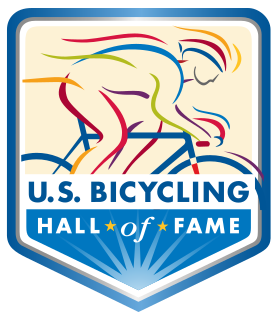 W
WThe American Star Bicycle was invented in 1880 by G. W. Pressey and manufactured by the H. B. Smith Machine Company in Smithville, Burlington County, New Jersey. It was characterized by a small wheel in front to avoid the problem of tipping forward inherent in other high wheelers. A Star bicycle was photographed being ridden down the steps in front of the United States Capitol in 1885 to demonstrate its longitudinal stability, and Star bicycles were used for the sport of bicycle polo in the mid-1880s. Pressey sued Smith in 1887 for royalties. The name "Star" was attributed to the double star arrangement of the spokes.
 W
WThe Good Roads Movement occurred in the United States between the late 1870s and the 1920s. Advocates for improved roads turned local agitation into a national political movement. It started as a coalition between farmers’ organizations groups and bicyclists’ organizations, such as the League of American Wheelmen. The goal was state and federal spending to improve rural roads. By 1910, automobile lobbies such as the American Automobile Association joined the campaign, coordinated by the National Good Roads Association.
 W
WThe United States Bicycling Hall of Fame, located in Davis, California, is a private 501c3 non-profit organization formed to preserve and promote the sport of cycling. The organization was founded in 1986 in Somerville, New Jersey and has inducted cyclists who have "achieved tremendous success in racing or have enhanced the sport" since 1987. It has operated a museum in Davis since 2009.
 W
WThe League of American Bicyclists (LAB), officially the League of American Wheelmen, is a membership organization that promotes cycling for fun, fitness and transportation through advocacy and education. A Section 501(c)(3) nonprofit organization, the League is one of the largest membership organizations of cyclists in the United States.
 W
WThe Massachusetts Bicycle Club (est.1879) was a cycling club in Boston, Massachusetts.
 W
WOverman Wheel Company was an early bicycle manufacturing company in Chicopee Falls, Massachusetts from 1882 to 1900. It was known for bicycles of higher quality and lower weight than other bicycles of its time. Despite a nationwide bicycle craze in the late 1800s, the company was undercut by lower-priced competition, nearly went bankrupt in 1897, and never recovered from an 1899 fire. The company was sold in 1900.
 W
WAlbert Augustus Pope was a Brevet Lieutenant-Colonel in the Union Army. He was an importer, promoter, and manufacturer of bicycles, and a manufacturer of automobiles.
 W
WSylph was a brand of bicycle designed by Charles Duryea in the late 1800s. They were initially manufactured by Ames Manufacturing Company, in Chicopee, Massachusetts, starting in 1890, and then by Rouse and Hazard, in Peoria, Illinois, from 1892 to 1898.
 W
WCycling in Syracuse, New York, has been common on the roads and paths for recreation, commuting, and as a sport since the latter part of the 19th century.
 W
WFrank W. Weston (1843–1911) was an English-born and trained architect who practiced in Portland, Maine and Boston, Massachusetts. He also invested in the bicycle industry and promoted cycling as a sport. He was the co-founder of the Boston Bicycling Club is known as the "father of American bicycling."